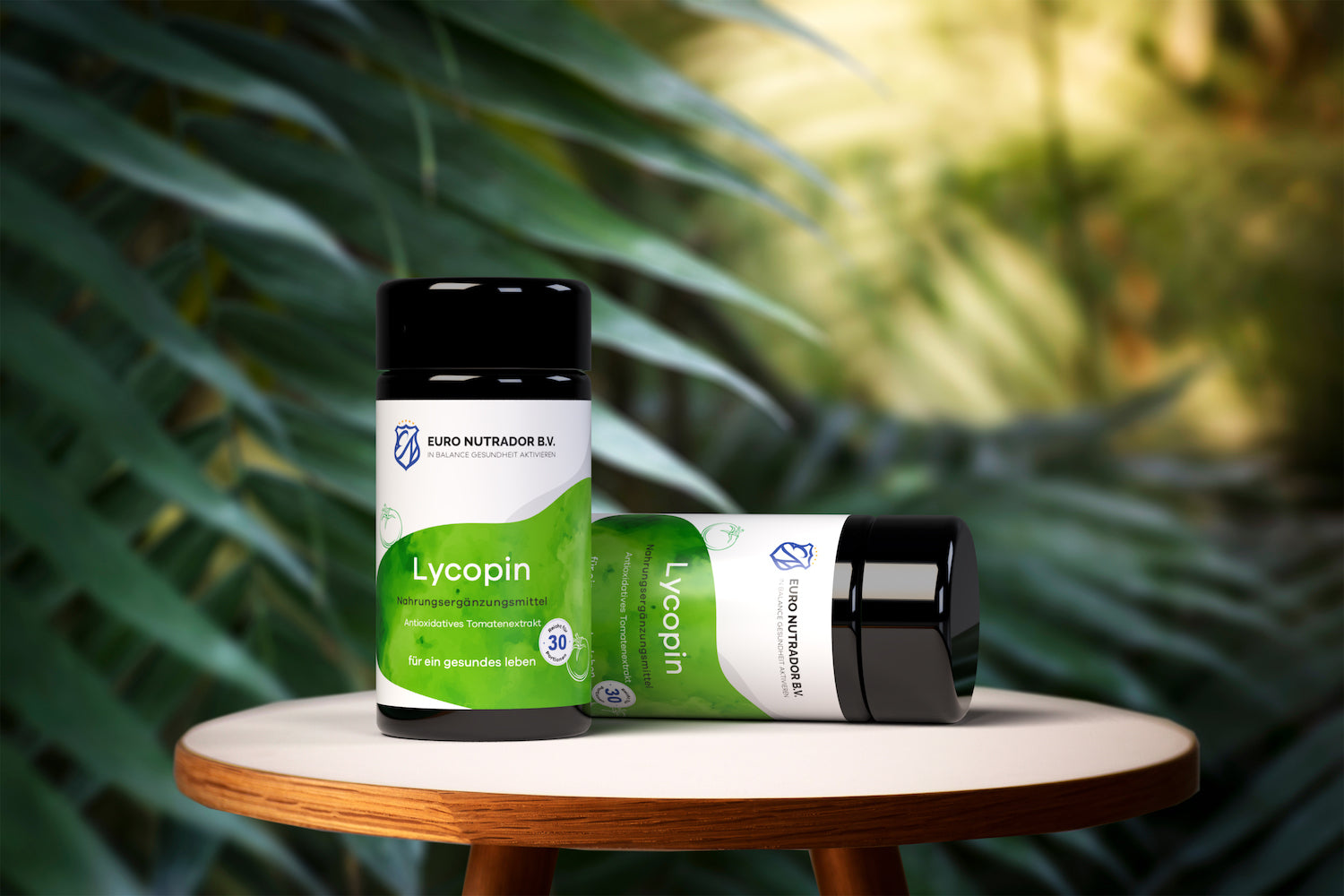Currently, about 100,000 secondary plant compounds are suspected, of which only a small portion has been scientifically researched. In human nutrition, 5,000 to 10,000 such compounds occur. Lycopene is one of them.
The discovery and significance of lycopene
The discoverer of the secondary plant compound is considered to be the French physician and botanist Pierre-Marie Alexis Millardet, who discovered lycopene in 1876 as a red pigment in tomatoes. The name for the secondary plant compound comes from the Latin name of the tomato, Lycopersicon esculentum. The compound is synthesized exclusively by plants, microorganisms, and fungi. It plays an important role in photosynthesis by absorbing light together with other carotenoids. Furthermore, chlorophyll molecules are protected by lycopene from oxidative damage caused by oxygen or light.
During the ripening of fruits and vegetables, these molecules are broken down, and the remaining carotenoids including lycopene become visible through their bright colors in fruits such as watermelons, strawberries, or tomatoes, as well as in flowers.
Carotenoids as precursors to vitamin A
Carotenoids belong to the secondary plant compounds that are converted by the human body into vitamin A. Thus, carotenoids are the precursors of vitamin A. They play an important role in immune defense and protect against infectious diseases. Since the visual pigment in the eye contains vitamin A as a component, carotenoids, especially lycopene, help maintain eyesight.
Among the carotenoids, lycopene is also designated as the food additive E160d.
Other carotenoids besides lycopene also include the following:
- Astaxanthin
- β-Carotene
- Canthaxanthin
- Capsanthin
- Capsorubin
- Cryptoxanthin
- Lutein
- Luteoxanthin
- Zeaxanthin
Both animals and humans must cover their need for provitamin A through food. Carnivores mainly take in vitamin A in the form of retinol or retinyl esters. In contrast, herbivores must use certain carotenoids as precursors, from which the body produces vitamin A. The plant compound β-carotene has the greatest activity among about 50 carotenoids whose provitamin A activity has been researched.
Occurrence of lycopene
In its natural form, the secondary plant compound lycopene occurs in various fruits and vegetables. In particular, the tomato contains a lot of lycopene, which also gives it the beautiful red color and has earned the plant compound the nickname tomato pigment. Because of this, the plant compound is also often used as a food coloring, especially in sauces and soups.
However, the highest lycopene content is found in the Gac fruit, mainly processed in Vietnam, also called baby jackfruit. Fruits and vegetables containing this plant compound are usually considered particularly heat-resistant. Therefore, they can also be cooked at higher temperatures.
Other fruits and vegetables that contain a lot of the secondary plant compound are:
- Grapefruits and other citrus fruits
- Watermelons
- Rose hips
- Peaches
- Pumpkins
- Mangoes
- Berries
Tomato paste also contains a very high lycopene concentration with 62 milligrams per 100 grams. The riper the fruits are at harvest, the more lycopene they contain.
The effect of lycopene
The versatile effect of the secondary plant compound lycopene is only unleashed in connection with fat. The positive effect of the plant compound on health mainly includes strengthening the immune system through the stimulating effect on the growth and activities of certain immune cells. In addition to a cell-protective effect, the plant compound also has antioxidant properties, which are especially intended to protect the heart, eyes, and prostate. Lycopene also protects the skin from harmful UV rays and thus prevents the aging process.
Together with the substances alpha-carotene and beta-carotene, lycopene acts as a highly potent antioxidant that strengthens the body's defenses, captures and destroys free radicals, and thus can protect against various diseases. In particular, a positive effect of the plant compound is suspected in rheumatic complaints.
Tips for nutrition and absorption
Fat and oil improve the absorption of lycopene in the intestine. So it is good if you consume lycopene-containing foods together with oil. Various salads with healthy cold-pressed oils are well suited for this. Rapeseed or wheat germ oil in particular proves to be advantageous because it has a high vitamin E content compared to other oils.
The absorption of lycopene can also be inhibited by certain ingredients in foods. These include dietary fibers, pectins in fruits, or high doses of beta-carotene. A high phytosterol content, as found for example in margarine, also negatively affects the absorption capacity of lycopene.
In addition to the obligatory oil, the absorption of the plant compound also depends on bile salts and the pH value in the stomach. A disturbed balance can have a huge impact on absorption.
If you are prone to kidney stones, you should not eat too many tomatoes due to the oxalic acid they contain. To still ensure an adequate supply of the secondary plant compound, it is available in the form of supplements.
Lycopene as a dietary supplement
As a dietary supplement for lycopene, the product from Euro Nutrador is recommended. It is available with 90 or in the large pack with 180 pieces, which lasts a long time. As recommended dosage, one tablet per day with sufficient liquid after a meal applies. The product must be stored in a cool and dry place and kept out of reach of small children. It should also be noted that dietary supplements do not replace a balanced and varied diet.
Summary
Lycopene belongs to the group of carotenoids as a secondary plant compound. Tomatoes are particularly rich in lycopene. It is also the vegetable in which the plant compound was first discovered. In the human body, lycopene acts as a radical scavenger and protects cells from oxidative stress. In medicine, the plant compound is used for various diseases and is also used preventively. It inhibits inflammation and protects blood vessels. In addition, lycopene has a positive effect on the skin and delays aging processes. A combination with antioxidants such as vitamin C and vitamin E with lycopene enhances the effect of the plant compound. Since fat also improves absorption, it should be taken with the meal. The supplement from Euro Nutrador is excellent as a dietary supplement for lycopene.
Lycopene is a secondary plant compound that belongs to the class of carotenoids and is also known by the names lycopene or leukopene. Health-conscious people have certainly heard these terms several times.
Legal notice regarding health-related claims:
Our information is for general informational purposes only and does not replace medical advice. Dietary supplements do not replace a balanced diet and a healthy lifestyle. Health-related claims about dietary supplements must comply with the Health Claims Regulation (EC) No. 1924/2006 and be approved by the European Food Safety Authority (EFSA). If you have health complaints or questions, please consult a doctor.
Legal notice regarding health-related claims:
Our information is for general informational purposes only and does not replace medical advice. Dietary supplements do not replace a balanced diet and a healthy lifestyle. Health-related claims about dietary supplements must comply with the Health Claims Regulation (EC) No. 1924/2006 and be approved by the European Food Safety Authority (EFSA). If you have health complaints or questions, please consult a doctor.












